Nadežda Pejović and Žarko Mijajlović
Early astronomical heritage in Virtual Library of Faculty of Mathematics in Belgrade
Introduction
The Virtual Library of the Faculty of Mathematics (http://elibrary.matf.bg.ac.rs) is the largest database of digitized texts in Serbia which is open for public use. At the time of writing this article, it contains nearly 1500 works. Important collections in this library are a collection of 400 doctoral dissertations in mathematical sciences, most of them obtained at the Faculty of Mathematics of the University of Belgrade and rare books from the 18th and 19th century. Collection of astronomical books numbers about 80 digital copies and includes the oldest books on astronomy written by Serbian scientists. Some of these books exist only in one copy and in fact are unavailable to the general public.
In this paper we present a collection of books on astronomy written mostly by Serbian authors and printed up to the XX century that are digitized and uploaded into the Virtual library. These books are the first Serbian astronomical books, and we can freely say that they are the first scientific works of Serbian authors. Let us note here a general feature of these first Serbian scientists, particularly those from the XVIII and XIX century. They were universal in their research interest and in other respects as well, so astronomy was not their only specialty. They were successful in other sciences, too: in mathematics, physics or philosophy, for example. For them, science mostly was the view of a unique being - Nature. The language of science was used by them to describe the nature of this being. Besides, they were often successful politicians, artists, travelers and writers of novels and poems. Their importance for the development of Serbian culture, language and science is enormous. Therefore, in addition to their manuscripts from astronomy we present here their brief biographies and other works as well. In this article we present the short biographies and a selection of their astronomical works of the following authors:
- Ruđer Bošković (1711–1787), Elementorum Universal Matheseos, T. I–III, 1757, Venetis.
- Zaharije Orfelin Stefanović (1726–1785), Perpetual Calendar, 1783, Vienna.
- Atanasije Stojković (1773–1832), Physics, 1810, Buda.
- Đorđe Stanojevic (1858–1921), most of his works (8) is digitized, including: The starry sky of independent of Serbia, 1882, Belgrade.
- Milan Andonović (1849–1926), Cosmography (1888), On the Cosmos (1889), Belgrade.
- Kosta Stojanović (1867–1921), Mechanics, 1892, Niš.
- Nikolai J. Zinger, (1842–1918), Course on Astronomy, 1925, Belgrade (published in 1898 in Russian and translated by Stevan Bošković, military general and professor of geodesy).
- Milutin Milanković (1879–1958), most of his books, 10 books, are digitized, including Through Space and Centuries, Belgrade, 1935 and Kanon Der Erdbestrahlung, 1941.
In the Virtual Library there are 15 digitized books of Serbian scientists printed in the XVIII and XIX centuries. The authors of these books are R. Bošković, Orfelin, A. Stojković, Đ. Stanojević, M. Andonović and K. Stojanović.
Ruđer Bošković
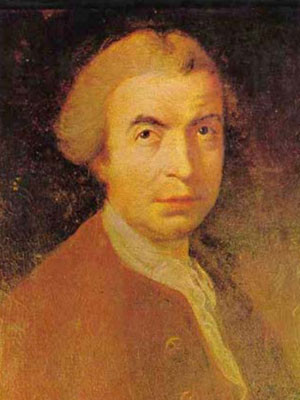
|
Ruđer Bošković (1711–1787) is a famous mathematician and astronomer of Dubrovnik and one of the most important scientists of his time. He is included among one hundred most prominent Serbs of all time. He was a university professor, founder of the Milano Observatory and the director of the French Navy Optical Institute. He was a universal creator: philosopher, mathematician, astronomer, physicist, geologist, architect, archaeologist, diplomat, writer, professor, poet and polyglot. He was born on 18 May 1711 as the seventh child of Nikola Bošković (a Serb from Orahova Dole, a village near Trebinje in Herzegovina) and mother Paola (of Italian descent, from the family of Baro Bettera, a notable poet from Dubrovnik). He lived mostly in Italy, where he gained world fame. Bošković died on February 13, 1787. Bošković formulated the Unified Law of Forces, assuming that there is not only an attracting force (as Newton's law states), but that there is also repulsion which alternately changes with attraction at small distances between bodies. According to him, an elementary dimensionless particle is the source of the force, and time and space are relative, unlike in Newtonian theory. Hence, he is often considered as the forerunner of Albert Einstein. |
Ruđer Bošković had numerous contributions to astronomy, among others: he introduced two geometric methods for determining the elements of the rotation of the Sun by observing the positions of three bodies, calculated the dimensions and the flatness of the Earth and discovered the comets. He was the first (1782) who accurately determined the trajectory of Uranus based on the measurement of coordinates of Uranus obtained by Messier and Méchain. It should be said that at the time of discovery it was thought that Uranus was a comet. By calculating the trajectory of Uranus, he perfected the method for determining the orbits of comets on the basis of four measured positions. In the 1800th it was one of the most accurate methods. He also studied the atmosphere of Jupiter and the nature of the Aurora.
Ruđer Bošković published numerous numbers of paper sheets in mathematics, astronomy and physics. His well-known books are Theoria philosophiae naturalis redakta ad unicam legem virium in natura existentium, Opera partinentia ad opticam et astronomia and Elementorum universae matheseos.

|
|
Pages from Bošković’s Elementorum Universal Matheseos. |
In the Virtual library there are the following books by him: Elements of Mathematics (Elementorum Universal Matheseos - Tomus I-III, 1757, Venetis), Diary on the Journey from Constantinople to Poland (1762), translated by D. Nedeljeković, 1937, Belgrade, On the law of continuity and its consequences in respect to the basic elements of matter and their forces, printed in 1754, translated into Serbian by E. Stipanić, 1975, Belgrade.
Zaharije Stefanović Orfelin
Zaharije Stefanović Orfelin (1726–1785) was a prominent Serbian poet, historian, engraver, baroque educator, calligrapher and writer of textbooks. He was born into a Serbian family in Vukovar (Slavonia).
Among his most important works is Slavenoserbski magazine printed in Venice in 1768. This is the first South Slavic magazine. Although it was printed just in one volume, its importance is great. In the preface he presented the idea of civil enlightenment, and he aslo said that science, literature and philosophy should leave the narrow circle of educated people and that it must become available to everyone. In 1768 Orfelin introduced into Serbian literature a language which was a mixture of Church and common language. He also included many Russian words. In this way he practically founded the Slavoserbian language. Because of his artistic works, primarily in the copperplate, he was elected a member of the Art Academy in Vienna.
Orfelin is the author of the first Serbian primer ("bukvar") which was used since 1767 in teaching many generations of students in writing and reading. He is also the author of the first Serbian-Latin textbook. His most comprehensive work was The Life of Peter the Great (Venice, 1772), whom he had seen as the enlightened monarch. He also wrote Perpetual (eternal) calendar. This book includes a comprehensive chapter on astronomy.

|
|
The cover pages from the Orfelin’s Perpetual Calendar. |
Orfelin’s Perpetual Calendar was printed in Vienna in 1783. The book has 366 pages and 9 astronomical drawings at the end of the book. Its content concerns mainly natural sciences and astronomical phenomena and contains, as well, description of historical events since the creation of the World in a chronological order. Chapters on astronomy bear the names: Space, The Moon and the Planets, Comets, Solar Eclipse and Moon Eclipse. It includes information on weather cycles, tables with information about the Sun and the Moon (needed for the calculation of the date of Easter according to the Big indicium), tables on the length of day and night, moon phase tables, and more. Therefore Perpetual calendar is the first book on astronomy written in the Slavic language, how Orfelin said 'to the benefit of the Slavic-Serbian ("slovenoserbskim") people'. For full review of this book see [4].
Atanasije Stojković
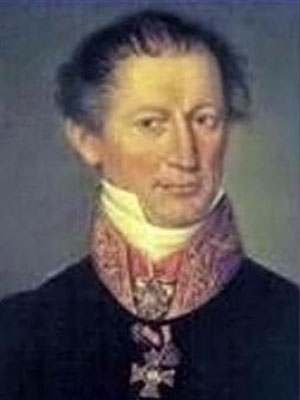
|
Atanasije Stojković was born in 1773 in Ruma, Vojvodina. In this town he finished Ascension school (Serbian Grammar school). He went soon to Sopron where in 1794 he completed the first six forms of high school and then enrolled in a secondary school in Szeged, where in 1796 graduated philosophy. In Vienna, in July 1797, he met Dositej Obradović and introduce himself with Dositej’s enlightenment ideas. In the fall of this year he managed to obtain support from Metropolitan Stratimirović for studies in Göttingen, at that time one of the most famous universities. There he obtained PhD degree in philosophy (1799), and began intensive studies in various sciences (physics, mathematics, astronomy, history). After a brief stay in Ruma (1799) he moved to Budapest, where he published his main work Physics (1801–1803), printed in 3 volumes. In the Habsburg monarchy it was difficult to obtain a civil job, so after the call of Severin Osipovič Potocki, the future Minister of Education of Russia, Atanasije accepted the position of professor of physics at newly established Kharkov University. He soon became the dean of the Department of Physics and Mathematics and on two occasions (1807–1808 and 1811–1813) he was the Rector of the University of Kharkov. He is the founder of the Kharkov Learned Society and he |
also received many honors and decorations. He became a member of the Imperial Academy of Sciences, obtained many material privileges, became a national consultant and Tsar Alexander I gave him the Medal of St. Vladimir of the third degree.
Atanasije Stojković was a hardworking and capable man, of wild spirit, very successful and was appreciated in his surroundings. He spoke several languages: German, Latin, French, Italian, English, Greek, Hungarian, and almost all Slavic languages. He had an interesting and exciting life that next to science was marked by an affair that ended his professorial career. He was also engaged in a secret mission and diplomacy. He died in Kharkov in 1832.

|
|
The cover pages from the Stojković’s Physics. |
Stojković’s book Фисика (Physics) was printed in 3 volumes. The first two volumes have 320 pages while the third one was written on 284 pages. The book presents an overview of the knowledge of that time of nature and natural phenomena. At the beginning of the first volume there is a chapter on mechanics (the properties and movements of the body). The most of the first volume (the second and the third chapter) is devoted to astronomy. There celestial bodies, apparently moving spheres of the sky, stars, solar system, the Sun, planets, comets, the Moon, the eclipses are described. The third chapter describes our planet Earth. Also, the concepts of celestial equator, horizon, zenith, and nadir are introduced. He also explains the geographical coordinates, the size of the Earth, the Earth's movement, the change of the day and night on the Earth and the Earth's interior. The rest of the book is devoted to the description of geographical notions and meteorological phenomena. The book is written in the common language, without complex mathematical formulas and equations, having the aim to present knowledge about astronomy and nature to ordinary people.
Đorđe Stanojević
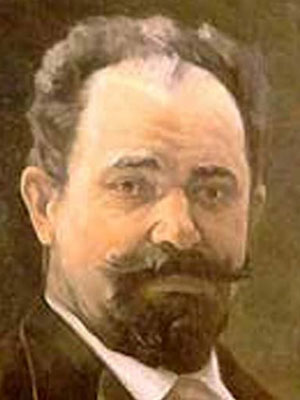
|
Đorđe Stanojević (1858–1921) was born in Negotin. He completed the Grand School in Belgrade. After that he became an assistant at Grand School, working with his teacher Kosta Alkovića (1836–1909) and then as a teacher at the First Belgrade Gymnasium (1883). Having the scholarship of the Ministry of Defense (1883–1887), he studied in the most famous astronomical and meteorological observatories in Europe (Potsdam, Hamburg, Medon, Greenwich, Pulkovo). On behalf of his results he received an invitation from the Paris Observatory to participate in a scientific research expedition to study the Sun and in Petrovsky where he participated in the study of the total eclipse of the Sun. Two years later he joined another scientific-research expedition to Sahara to study the thermal spectrum of the Sun. At that time and later, he published several research papers in astronomy in the publications of the Paris Academy of Sciences. These are the first scientific works in astronomy among Serbs. Stanojević was a versatile, knowledgeable man with a lot of active interest in many fields of science and technology. His interest in physics was great. Upon his return to Serbia he devoted himself to the study of modern physics. In the same time, he became the lecturer in physics and mechanics at the Military Academy. Also, he taught applied physics |
and mechanics at the High School and at the Belgrade University after establishing it in 1905. He was responsible for the construction of hydroelectric power plants in Serbia (Vučje, Negotin, Užice, Ivanjica and other places) and for the electrification of Belgrade. This put Belgrade among the first European capitals with full electric lighting. He died in Paris in 1921.
In Negotin there is a “Đorđe Stanojević” Square and a museum is dedicated to him. In New Belgrade there is a “Đorđe Stanojević” street. The Electric Power Industry of Serbia on the occasion of its day, 6th October, gives recognition “Đorđe Stanojević” for contributions to the development of Serbian electric power industry.

|
|
The starry sky of independent Serbia. |
The Virtual Library contains eight digitized books of Đorđe Stanojević: The starry sky of independent of Serbia, 1882, Belgrade; A walk through the clouds, 1884, Belgrade; Cosmic energy of modern physics (introductory lecture, 22nd September, 1887, Department of Physics at the Military Academy in Belgrade); Nikola Tesla and his discovery, 1894, Belgrade; Science of light, 1895, Belgrade; Central forces in nature, 1906, Belgrade; Industry of coldness, 1909, Belgrade; Inaccurate knowledge of the Resurrection in the Orthodox Church and the reform of the calendar, 1908, Belgrade. Stanojević works are characterized by the simplicity and easiness of writing when exposed to often complex astronomical phenomena. These phenomena, however complex, are mostly descriptively presented, without mathematical expressions and using very fine graphics. Therefore, this book is primarily intended for general education and general readers. In this regard, Stanojević achieved his goal, to bring the basic knowledge of astronomy to the general reader. It is our great pleasure to have this precious book out of the darkness of library storage into the light through the Virtual Library and made it easily accessible to the future readers. More details on Stanojević's biography and his books can be found in [6], [11] and [13].
Milan Andonović

|
Milan Andonović (1849–1926) was born in Požarevac where he finished primary and secondary schools. He was educated in Belgrade at the engineering departments of the Grand School in Belgrade and at the German Universities in Karlsruhe, Aachen and Munich under the supervision of famous professors Ritter, Jordan, and Helmert. There he specialized in mechanics, geodesy and astronomy. Upon his return to Serbia in 1880, he was appointed as teacher of geodesy at the Grand School in Belgrade. He was responsible for the introduction and enforcement of the cadastre in Serbia in the late 19th century. He founded the Geodetic Institute under whose auspices were surveyed many towns in Serbia. In 1907 he founded the Surveying and Building Academy where many Serbian surveyors and civil engineers were trained. Together with Jovan Dragašević, Milan Nedeljković and Đorđe Stanojević he is bearing the credit for introducing the teaching of astronomy into Serbian schools and promotion of science in Serbia. He died in Vienna in 1926. Andonović published a number of scientific papers, books (all printed in Belgrade), and discussions related to surveying, astronomy, shape and size of the Earth, the theory of least squares, survey and cadastre: Basics probability and the |
theory of least squares, 1886; The shape and size of the Earth, 1886; Cosmography with basic astronomical notes for high school teachers, 1888; The volume and size of our Earth, 1889; The Universe, 1889; Basic geodesy with distinctive view of the cadastral question, 1890–1897 (1st part 1890, p.368, 2nd part 1897 vol. 1, p. 369–1390; vol. 2, p.1391–1641); The cadastre, 1889. He also wrote during the First World War, political discussions and articles (in German and French) in favor of Serbia. There are the following digital copies of his books in the Virtual Library: Cosmography, 1888, and The Universe, 1889, both printed in Belgrade.
Cosmography was intended for gymnasium students and pupils of other secondary schools. Probably, it was used as a secondary textbook at the Military Academy and the Grand School, the forerunner of the Belgrade University. In addition to the foreign literature, Andonović mentioned in the bibliography two Serbian authors: Trigonometry of Dimitrije Nešić and Cosmometry by Jovan Dragašević. The book has many illustrations: 141 photos and drawings, 17 tables and a large star map. He took most of these drawings, with permission, from a book of E. Weiss, then the director of the Vienna Observatory. Cosmography is an extensive (533 pages) and quite comprehensive book. It describes celestial sphere, constellations, the shape and size of the Earth, the Earth's rotation and revolution, the apparent movement of the Sun, coordinate systems, time, calendars, Solar system, stars, tides, precession, cosmogony and among other things, Kant-Laplace's theory about the origin of the world (i.e. the Solar system). Besides all that, there are twenty fully solved astronomical problems with detailed explanations.

|
|
Pages from the Andonović’s Cosmography. |
The book is written in a very beautiful style, almost as a literary work, and is worth reading also from that point of view. There we find many forgotten words and terms whose meaning were forgotten or has changed till today. For example, the cluster (Serb. "zvezdano jato") there means constellation, stardust (Serb. "ozvezdina") – meteorite, comet star (Serb. "zvezda repatica") – comet, the inflow and outflow (Serb. "priliv" i "odliv") – the tide. Also, for each constellation he introduces the alinjman – having the meaning similar to asterism. For example the alinjman of Big Dipper (in Serbian also called "Velika kola" - Big Chariot) has four stars – the asterism trapeze of the constellation Big Dipper, while the alinjman of North Star is the line that passes through the rear wheels of the Big Chariot towards to the Polar Star. The Virtual Library contains digital copies of his books: Cosmography (1888) and The Universe (1889), both published in Belgrade.
Kosta Stojanović
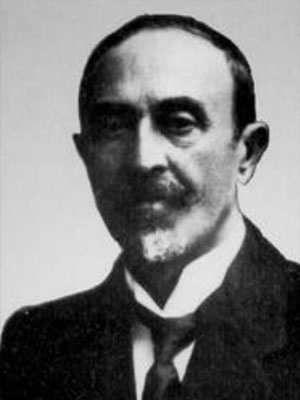
|
Kosta Stojanović (1867–1921) was born in Aleksinac. There he finished elementary school and lower secondary school, while the high school he completed in Niš. He graduated in mathematical sciences at the Grand School in Belgrade. For some time he was working as a high school teacher in Niš and Belgrade. He went to Paris in 1893 where he studied mathematics, astronomy, mechanics and physics under the supervision of famous professors Poincaré, Picard and Appell. There he became a member of the Historical Society of France and the French Astronomical Society. He went to Leipzig in 1897 where he entered doctoral studies in mathematics. Unfortunately, he returned to Serbia after three months because of his illness. Kosta Stojanović was a university professor, but he had a very rich political career, too. At the beginning of 1900th he became a deputy as the representative of the Niš district. Since 1903 he taught applied mathematics at the Grand School and at the Belgrade University after it was established in 1905. Whereupon he abruptly interrupted academic career and 1906 he became Minister of Commerce, at the time of the custom war between Belgrade and Vienna. |
Around that time, Kosta Stojanović wrote the book Fundamentals of economy value. This book is a work in mathematical economics and Stojanović there used very advanced mathematical apparatus, for example, the theory of partial differential equations to describe economic models. Even today there is an interest for this book, not only in Serbia but also in the other parts of former Yugoslavia. This is probably the most advanced book in economics ever printed in Serbia due to the mathematical tools that were used in it.
He was Minister of Agriculture (1919–1920) and Minister of Finance in 1921 in the government of Nikola Pašić. A few days after the appointment as the minister of finance, he suddenly died.

|
|
Mechanics by Kosta Stojanovic. |
The book Mechanics is actually a university textbook in applied mathematics. Let us mention that at that time, under the term applied mathematics it was assumed mechanics, mathematical physics and celestial mechanics. The most of the book is related to the vector calculus, then the kinematics, statics, dynamics, analytical mechanics and the theory of differential equations. Chapter Ten of this book is devoted to astronomy. There he gave the basics of celestial mechanics and the theory of differential equations of the motion of planets, comets and satellites. Also, the theory of elliptical movement, the method of variation of constants and parabolic motion of comets are presented.
Nikolai Yakovlevich Tsinger
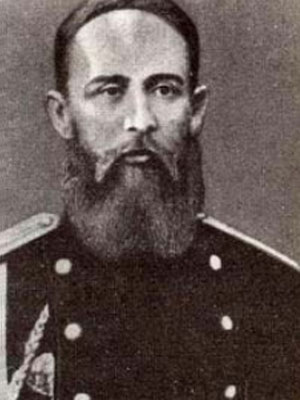
|
Nikolai Yakovlevich Tsinger (Николай Яковлевич Цингер, 1842–1918) was Russian astronomer, but we decided to include his book Course of Astronomy into this collection since the translation of this book was an important contribution to the scientific astronomical literature in Serbian. The appearance of this book foreran the new generation of Serbian university textbooks and monographs in astronomy. He was an astronomer, a prominent geodesist and cartographer. He is considered as the founder of Russian Geodetic School. He graduated in 1863 Artillery Academy and worked at the Pulkovo Observatory (1872–1883) near St. Petersburg. After that he was the professor at Nicholas Naval Academy and became the lieutenant general (1896). He was also the member of the Imperial St. Petersburg Academy of Sciences. Since 1905 and until 1917 Tsinger was one of the leaders of the Russian Geographical Society (the chairman of the Department of Mathematical Geography). He had a great teaching career and did much to spread in Russia geodetic and astronomical knowledge. In 1874 Tsinger proposed a method of determining clock corrections from observations of two stars at equal altitudes. This procedure is called “method Tsinger”. Since this method is based on simple observation and produces high |
precision, it was widespread. Since 1926, Astronomical Institute in Leningrad published “Ephemerides pairs Tsinger" for the practical application of this method. The method is described, for example, in the book General Astronomy by B. Ševarlić and Z. Brkić (Belgrade 1971, in Serbian; digital copy of the book is in the Virtual Library).
A cape on Bolshevik Island in the Severnaya Zemlya archipelago is named Tsinger, as well as a crater on the far side of the Moon. Nikolai Tsinger was the younger brother of Vasily Yakovlevich Tsinger (1836–1907), mathematician, botanist, professor at Moscow University and the president of the Moscow Mathematical Society. It is interesting that Nikolai’s name is spelled in the Internet in several different ways (for example Nikolaj Jakovljevič Zinger).

|
|
The cover page of Course of astronomy. |
The Tsinger textbook on astronomy Course on Astronomy (Russ. "Kurs astronomii - Chast’ teoreticheskaia", Serb. "Kurs astronomije"), was translated from Russian to Serbian by academician, general Stevan Bošković (1868–1957), geodesists and professor at Military Academy in Belgrade. The Russian edition of the book was published in 1899, while the Serbian edition appeared in 1925. Bošković translated this book not by chance. He used Tsinger’s method for the purpose of time determination for the points of all geographic latitudes in Serbia (see [3], [12]) during his very extensive geodetic measurements in Serbia in the first decade of XX century. Tsinger’s book without doubt was his valuable companion during this exploration. Secondly, he spent some time in the late XIX century studying astronomy and geodesy at the Pulkovo Observatory. Bošković certainly met Tsinger there who was then the leading Russian geodesists and professor in St. Petersburg.
This book was far the most advanced book comparing to the existing astronomical books in Serbian at the time of appearance. It covers all main topics in general astronomy, astrometry and celestial mechanics. All together there are 27 chapters that spread out on 330 pages which explain in great details spherical trigonometry, all main astronomical notions, formulas and astronomical measurements and computations. Meticulous care is given to the mathematical apparatus, particularly to the theory of errors and related topics such as the least squares method. The book was intended for students of geodesy and hydrography and the students at military academies. Tsinger book significantly influenced development of astronomy in Serbia, particularly astronomical applications in geodesy. The book should be searched in the Virtual Library under the author’s name Cinger.
Milutin Milanković
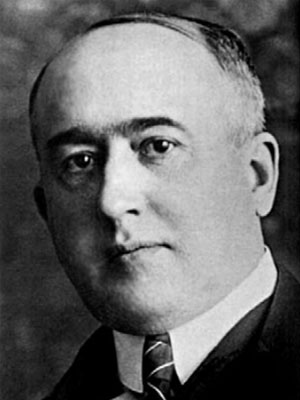
|
Milanković was not the first Serbian astronomer. However he was certainly the most recognized and most important Serbian astronomer and scientist as well. His work is enormous and so important that it is not possible in a short article as this one to present even in a part all his scientific achievements. However, the collection of Milanković’s works in the Virtual Library is the richest one, so we decided to include this short note. For more details on his the reader is directed to more complete articles on his biography. Milutin Milanković was born in 1879 in Dalj (Slavonia, nowadays part of Republic of Croatia). He becomes a student of civil engineering at the Technische Hochschule in Vienna. There he took the first degree in 1903 and the PhD one in 1904. He was the first Serb who acquired the PhD title in engineering. Following an invitation Milanković came to Belgrade from Vienna in 1909 to teach applied mathematics at the Faculty of Philosophy of Belgrade University. His coming was a merit of Bogdan Gavrilović and Mihailo Petrović Alas who both taught mathematics at the University. Milanković was at the Belgrade University till his retirement in 1955. He taught applied mathematics (theoretical physics, mechanics and astronomy). He was the first in starting lectures in celestial mechanics. |
Milanković was a full member of the Serbian Academy of Sciences, member of Deutsche Akademie der Naturforscher Leopoldina in Halle and corresponding member of a number of other academies and scientific societies in the world. Milanković died in 1958 in Belgrade. His activity resulted in about ten books and more than hundred papers in mathematics, celestial mechanics, astronomy and geophysics.
Milutin Milanković is best known for his theory of glacial ages. The theory takes into account the complex secular computation of perturbations in planet motions and it were published in Théorie mathématique des phénomènes thermiques produits par la radiation solaire in 1922. Due to these results he became well known in the world scientific community, so that great German climatologist W. Köppen invited him to cooperate in building a great work Handbuch der Klimatologie.
For this purpose a part, which was published in 1930, entitled Mathematische Klimalehre und Astronomische Theorie der Klimaschwankungen was written by Milanković. Here his theory of planet heating based on insolation was extended with a special reference to the Earth. By applying this theory to the run of glacial ages it was shown that Milanković had created a good and mathematically exact theory of terrestrial climate. Milanković also created a theory of motion of terrestrial poles and succession of glacial ages. His main work is Kanon der Erdbestrahlung und seine Anwendung auf das Eiszeitenproblem printed shortly before the beginning of the Second World War. Due to this the scientific world community learnt about Milanković’s theory with some delay. As a consequence the world recognition arrived with postponement. This work appears as a synthesis of his earlier works which concern his research activity within boundary fields between many natural sciences and mathematics.
Milanković also proposed an improvement of the Gregorian time reckoning. It was accepted by the Orthodox Christian Community during a Congress of Orthodox Churches in Constantinople in 1923. Milanković’s calendar-reform was accepted by the Orthodox Christian Community, but not by all Churches, including the Serbian one (see [5]). Milanković also wrote several books on history and popularization of science and autobiography books, for example Through Space and Centuries, Through the Realm of Science and Recollection, Experiences and Vision. After Milanković a minor planet, a lunar crater and a Mars crater have been named. In Belgrade one street and one gymnasium have been named after him. European Geosciences Union established in 2002 an award Milutin Milankovic Medal for achievement in the area of climate research.

|
|
A page from Through Space and Centuries. |
We shall shortly review his book Through Space and Centuries. The book fictionalized the development of astronomy. Milanković highly cherished the written word. The novel explains the scientific history of astronomy written as a travelogue prose. It consists of a collection of letters sent by Milanković to the loved one describing the long imaginative journey through the past of millions of years and travel through the deep Universe. Letters represent a treasury of scientific explanations and portraits of famous scientist: Eratosthenes, Ptolemy, Pythagoras, Copernicus, Kepler, Newton, Einstein and Tesla. The book is a collection of records about the cradle of wisdom, scientific knowledge and philosophical views of ancient people of Babylon, China, India, old Greece and Rome up to the modern times. This book of stories about the ancient beauties and thoughts written in the splendor language has become his brand name. Five editions of the book were published in Serbian and two editions in German.
Pavle Vujević and Vojislav Mišković
Pavle Vujević (1881–1966) is known for his work in mathematical geography. His major work is the university textbook Fundamentals of the mathematical and physical geography published in 1924 in Belgrade. A review of this book and details on Vujević’s biography can be found in [8].
Vojislav Mišković (1892–1976) is a prominent Serbian astronomer from the first half of the XX century. Most of his books (10) are digitized and included into Virtual Library. This collection includes Cosmography (1931, Belgrade) and Collection of solved problems in general astronomy (Part I, 1956, Belgrade; Part II, electronic edition, Virtual Library, 2009). Mišković’s biography and review of this collection is given in [9].
Conclusion
The Virtual Library of the Faculty of Mathematics has a significant place in the presentation of old and rare books to the Serbian scientific and professional community and general public wide-world. This fact we can convince, for example, by the choice of books from the collection of astronomical works of the Serbian scholars presented in this article.
Bibliography
[1] J. Simovljević, Astronomy, in the book Thirty years of the Faculty of Science of the University of Belgrade (in Serbian), PMF, Belgrade, 1980.
[2] Ž. Mijajlović, Z. Ognjanović, N. Đorđević, T. Zečević, Virtual library - data base of textual data, NCD Review, vol. 5, 2004, 42-48.
[3] М. Dačić, Reduction of astrogeodetic determinations on the unique system, Proc. IV Serb.-Bulg. Astron. Conf., Belgrade 21-24 April 2004,
eds. M. S. Dimitrijević et al.
[4] M. Milovanović, Digitization of the book the Eternal callender written by Zacharius Orphelin, NCD Review, vol. 11, 2007, 43-47.
[5] M. Dimitrijević, Da li je novojulijanski kalendar usvojen u Konstantinopolju 1923. godine Milankovićev, Milanković-Trpkovićev ili Trpković–
Milankovićev?, Proc. Conf. “Development of astronomy in Serbs”, Belgrade, 2004. Publ. Astron. Soc. “Ruđer Bošković”, No. 6, 2005, 347-350.
[6] N. Pejović, Zvezdano nebo nezavisne Srbije Đorđa Stanojevića, Proc. Conf. “Đorđe Stanojević – život i delo – povodom 150 godina od rođenja”,
Novi Sad, 10-11 april 2008, SANU Novi Sad, 2008, 163-171.
[7] N. Pejović, Digitization of mathematical textbooks used in Serbia in the past, NCD Review, vol. 12, 2008, 55-64.
[8] N. Pejović, Ž. Mijajlović, Review of the digitized book Fundamentals of mathematical and physical geography by Pavle Vujević, NCD Review, 13,
2008, 74-90.
[9] N. Pejović, Ž. Mijajlović, Digitized Works of Academician Vojislav Mišković, NCD Review, 15, 2009, 8-18.
[10] N. Pejović, Manuscript Collection of solved problems of General astronomy by Vojislav Mišković, Publ. Astron. Obs. Belgrade, No. 86, 2009.
[11] A. Pejović, Digitisation of Book Cosmic Energy and Modern Physics (Васионска Енергија и Модерна Физика) by Đorđe Stanojević, NCD Review,
15, 2009, 27-30.
[12] V. Ogrizović, A construction of an advanced measuring system for astro-geodetic determinations, Publ. Astron. Obs. Belgrade No. 86 (2009),
145-150
[13] N. Pejović, Digitized Books of Đorđe Stanojević in the Virtual Library of Faculty of Mathematics, NCD Review, 17, 2010, 32-38.
Supplement: Early astronomical books and works in Virtual Library
Ruđer Bošković
Elementorum Universae Matheseos - Tomus I, 1757, Venetiis.Elementorum Universae Matheseos - Tomus II, 1757, Venetiis.
Elementorum Universae Matheseos - Tomus III, 1757, Venetiis.
Dnevnik sa puta iz Carigrada u Poljsku, 1762, translated by Dušan Nedeljković, Beograd, 1937.
O zakonu kontinuiteta i njegovim posledicama u odnosu na osnovne elemente materije i njihove sile, 1754, translated by Ernest Stipanić, Mathematical Institute, Belgrade, 1975.
Zaharije Orfelin Stefanović
Večni kalendar, Beč, 1783.Atanasije Stojković
Fizika, prostim jezikom spisana za rod Slaveno-Serbski, tom I, Budim, 1801.Fizika, prostim jezikom spisana za rod Slaveno-Serbski, tom II, Budim, 1802.
Fizika, prostim jezikom spisana za rod Slaveno-Serbski, tom III, Budim, 1803.
Đorđe Stanojević
Zvezdano nebo nezavisne Srbije, Beograd, 1882.Šetnja po oblacima, Beograd, 1884.
Vasionska energija i moderna fizika, Beograd, 1887.
Nikola Tesla i njegova otkrića, Beograd, 1894.
Iz nauke o svetlosti, Beograd, 1895.
Centralne sile u prirodi, Beograd, 1906.
Netačno poznavanje Vaskrsenja u pravoslavnoj crkvi i reforma kalendara, Beograd, 1908.
Industrija hladnoće, Beograd, 1909.
Milan Andonović
Kosmografija sa osnovnim astronomskim napomenama, Beograd, 1888.O Kosmosu, Kraljevska srpska državna štamparija, Beograd, 1889.
Kosta Stojanović
Atomistika - jedan deo iz filozofije Josifa Boškovića, Niš, 1892.Mehanika, Beograd, 1912.
Rasprave i članci iz nauke i filozofije, Beograd, 1922.
Nikolai Tsinger
Kurs astronomije, 1899, translated by Stevan Bošković, Beograd, 1925.Milutin Milanković
O primjeni mаtеmаtičkе teorije sprovođenja toplote па probleme kоsmičkе fizike, Zagreb, 1913.O pitanju astгопоmskih teorija ledenih doba, Dionička Tiskara, Zagreb, 1914.
Phenomenes thermiques, Paris, 1920.
Reforma julijanskog kalendara, Beograd, 1923.
Nebeska mehanika, Beograd, 1935.
Kanon der Erdbestrahlung, Serbian Royal Academy, Belgrade, 1941.
Kroz vasionu i vekove - jedna astronomija za svakoga, Beograd, 1943.
Osnivači prirodnih nauka - Pitagora - Demokritos - Aristoteles - Arhimedes,, Beograd, 1947.
Astronomska teorija klimatskih promena i njena primena u geofizici, Naučna knjiga, Beograd, 1948.
Kroz carstvo nauka, Naučna knjiga, Beograd, 1950.
Uspomene doživljaji i saznanja iz godina 1909 do 1944,, Naučna knjiga, Beograd, 1952.
Uspomene doživljaji i saznanja posle 1944 godine, Naučno delo, Beograd, 1957.
Astronomische Theorie der Klimaschwankungen, Belgrade, 1957.
Istorija astronomske nauke - od njenih prvih početaka do 1727, Beograd, 1979.
Glas SKA CIX - Kalorična godišnja doba, SKA, Beograd, 1923.
Glas SKA CXVII - Kalendar Zemljine prošlosti, SKA, Beograd, 1926.
Glas SKA CXX - Ispitivanja o termičkoj konstituciji planetskih atmosfera, SKA, Beograd, 1926.
Glas SKA CLXXV - Novi rezultati astronomske teorije klimatskih promena, SKA, Beograd, 1937.
Pavle Vujević
Osnovi matematične i fizičke geografije, I deo, Beograd, 1923.Osnovi matematične i fizičke geografije, II deo, Beograd, 1926.
Vojislav Mišković
O jednom empiričkom obrascu pri određivanju planetskog kretanja, Beograd, 1928.Kosmografija - za šesti razred srednjih škola, Beograd, 1931.
Godišnjak našeg neba za godinu 1937, Beograd, 1937.
L'Observatoire Astronomique de l'Universite de Belgrade, Belgrade, 1939.
Zbirka rešenih zadataka iz opšte astronomije, Beograd, 1956.
Karta sazvežđa severnog neba, Beograd, 1957.
Sunčevo pomračenje, Beograd, 1960.
Johannes Kepler, Beograd, 1972.
Logaritamske i numeričke tablice, Beograd, 1973.
Hiparh, Beograd, 1976.
Hronologija astronomskih tekovina I, Beograd, 1957.
Hronologija astronomskih tekovina II, Beograd, 1976.
(Adapted from the tеxt published in 2011 in the NCD Review, 19, 11–25)



